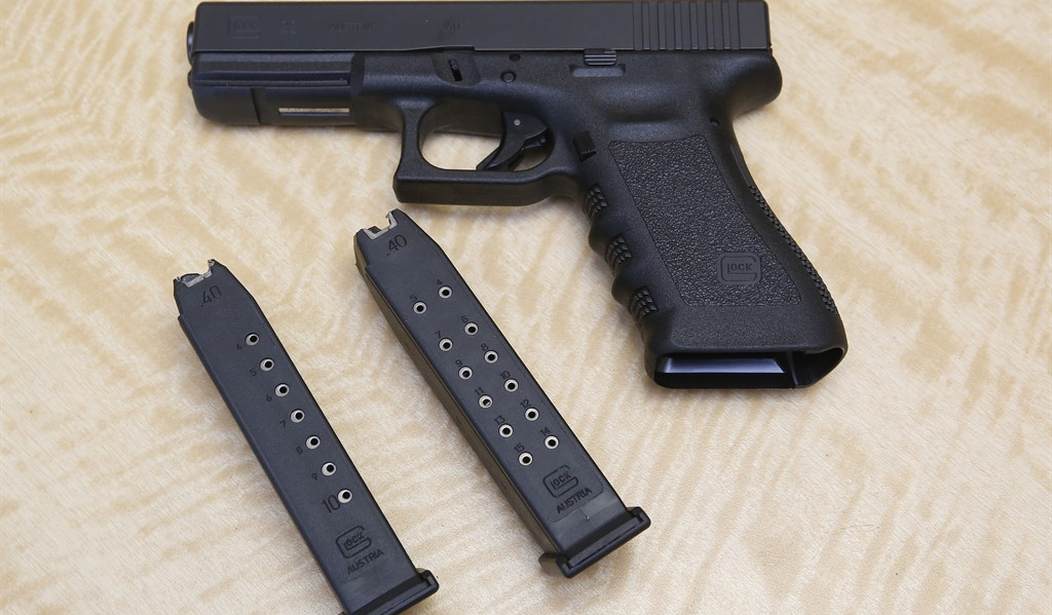It’s not the first time that U.S. District Judge Roger Benitez has determined that California’s ban on “large capacity” magazines violates the Second Amendment, but hopefully this time the decision will stick.
Benitez issued his first ruling before the Bruen decision was released last year, but the Ninth Circuit pulled its typical move and overruled him in an en banc review, sending the case to the Supreme Court. After Bruen, the Supreme Court granted cert and remanded the case back to the Ninth Circuit with instructions to reconsider in light of the text, history, and tradition test it laid out, but the Ninth Circuit decided instead to kick the case back to Benitez for a do-over; likely an attempt to keep Duncan v. Bonta away from a full SCOTUS review for as long as possible.
After today’s decision, I doubt the Ninth Circuit is going to be any more eager to get the case back to the Supreme Court in an expeditious manner, because it’s absolutely devastating to the gun control position. Instead, we’re getting ready for another long and drawn out appellate fight, but the next time Duncan reaches the Court it will be there to stay.
You can read the full decision for yourself here, but attorney Kostas Moros of Michel & Associates did a great job of highlighting some of Benitez’s more blistering criticisms of the California law in question.
Benitez takes apart the argument states like California are making regarding an arm only being protected if it is frequently actually used for self-defense. pic.twitter.com/oyIn1nAM1Z
— Kostas Moros (@MorosKostas) September 22, 2023
Benitez goes through an excellent historical analysis that is more thorough than the superficial one we've seen other courts apply (on purpose, so they could uphold the laws). pic.twitter.com/p5mIwr7JtD
— Kostas Moros (@MorosKostas) September 22, 2023
Benitez came out swinging from the outset, noting that there’s no real definition of a “large capacity” magazine. Instead, some states have instituted bans on magazine capacity in what appears to be a completely arbitrary fashion.
There is no American tradition of limiting ammunition capacity and the 10-round limit has no historical pedigree and it is arbitrary and capricious. It is extreme. Our federal government and most states impose no limits17 and in the states where limits are imposed, there is no consensus. Delaware landed on a 17-round magazine limit. Illinois and Vermont picked limits of 15 rounds for handguns and 10 rounds for a rifles. Colorado went with a 15-round limit for handguns and rifles, and a 28-inch tube limit for shotguns. New York tried its luck at a 7-round limit; that did not work out. New Jersey started with a 15-round limit and then reduced the limit to 10-rounds. The fact that there are so many different numerical limits demonstrates the arbitrary nature of magazine capacity limits.
In a stealth return to the interest balancing test rejected by Heller and Bruen, the State ostensibly justifies its magazine limits by deeming the smaller magazines “wellsuited” for its citizens. Suitability, in turn, is based on concocted statistics about what a hypothetical average person needs to defend against an attacker or attackers in an average self-defense situation. Based on this hypothetical statistically average case scenario, the State permits its citizen to have a gun, but the State decides the number of rounds in the gun that it finds suitable.
In so doing, the State denies a citizen the federal constitutional right to use common weapons of their own choosing for self-defense. There have been, and there will be, times where many more than 10 rounds are needed to stop attackers. Yet, under this statute, the State says “too bad.” It says, if you think you need more than 10 chances to defend yourself against criminal attackers, you must carry more magazines. Or carry more bullets to hand reload and fumble into your small magazine while the attackers take advantage of your pause. On the other hand, you can become a criminal, too. So, the previously law-abiding California citizen who buys and keeps at her bedside a nationally popular Glock 17 (with its standard 17-round magazine) becomes the criminal, because the State dictates that a gun with a 17-round magazine is not wellsuited for home defense.
There’s no way I can do justice to Judge Benitez’s decision in a single blog post when every line he penned is a smackdown to the state’s proposition that they can turn citizens into criminals overnight simply for possessing magazines that are in common use for a variety of lawful purposes. Benitez’s footnotes are chock-full of defensive gun uses and armed citizens who fired more than ten rounds in defense of themselves and others, exposing the hollowness of Bonta’s position that only magazines with a capacity limited to ten are “suitable” for we the people.
I’ve been in board meetings for the Citizens Committee for the Right to Keep and Bear Arms this afternoon and prepping for my virtual keynote address at AMM-Con this evening, so I haven’t had a chance to do as deep a dive on Duncan as I’d like, but I like almost everything I’ve seen. My only gripe is that, unlike his first go-round with Duncan, Benitez granted a 10-day stay to allow Bonta to appeal, which means that his ruling won’t kick off another “Freedom Week” like we had in April of 2019, when an estimated 1-million “large capacity” magazines were sold to California residents before Benitez’s decision was stayed. Today’s decision unfortunately keeps the status quo in place for now, but I think the writing’s on the wall for magazine bans once SCOTUS gets ahold of Duncan again.









Join the conversation as a VIP Member